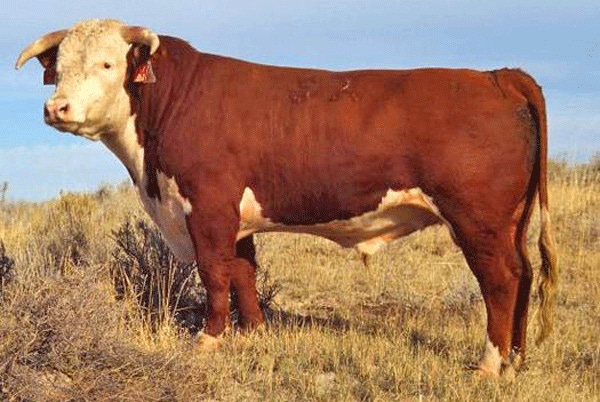
• Nutrition and management practices that increase intramuscular fat deposition relative to other fat depots have the potential to decrease production of excess fat, improve the efficiency of beef production and be beneficial to the U.S. beef industry in meeting the growing world demand for high-quality beef cuts.
December 6, 2010

It is a lesson taught in every school: Quality can be judged by one’s grade, and scientists with Oklahoma State University’s Division of Agricultural Sciences and Natural Resources are working to help beef producers get the best meat grade possible.
“Marbling is white flecks of fat within the meat muscle,” said Gerald Horn, OSU Graduates of Distinction professor in beef nutrition and management. “The greater the amount of marbling in beef, the higher its grade because marbling makes beef more tender, flavorful and juicy.”
USDA Prime beef — approximately 2 percent of graded beef — has the highest levels of fat marbling, so it is the most tender and flavorful. Most of the graded beef sold in supermarkets is USDA Choice or USDA Select. The protein, vitamin and mineral content of beef are similar regardless of the grade.
“Nutrition and management practices that increase intramuscular fat deposition relative to other fat depots have the potential to decrease production of excess fat, improve the efficiency of beef production and be beneficial to the U.S. beef industry in meeting the growing world demand for high-quality beef cuts,” Horn said.
Intramuscular fat deposition develops early during growth, and can be influenced by pre-feedyard management practices. All cattle start out eating grass; approximately 75 percent of them are eventually shipped to feedyards where they are grown to maturity, or "finished," being fed specially formulated grain-based diets.
“Rate of weight gain is a key determinate of profitability in stocker cattle operations,” Horn said. “In general, breakeven selling price decreases as average daily gain increases.”
The objective of Horn and the DASNR research team is to examine the effect of forage energy intake and type of ruminal fermentation on growth performance, partitioning of fat among depots and carcass characteristics of stocker cattle. An important outcome of this research will be an increased understanding of the physiological mechanisms by which muscle growth and metabolism influence marbling development.
“Our research showed stocker cattle production programs that result in higher rates of gain and/or higher ruminal propionate concentrations increase marbling and backfat,” he said. “At moderate to high rates of gain, backfat increases more rapidly than marbling; this indicates that moderate rates of gain during the stocker phase could enhance marbling relative to backfat.”
Horn said while there were wide ranges in marbling scores and backfat thickness at the end of the grazing program, marbling scores at the end of the finishing phase were not different when the steers were slaughtered at a common backfat endpoint.
However, days on feed during the finishing phase of the DASNR research project ranged from 83 days to 138 days.
“Greater average daily gain during the stocker phase is important for decreasing breakeven prices and increasing profitability in the feedlot,” Horn said. “This is particularly important during this new era of higher grain prices and increased cost of gain in the feedlot.”
Marbling develops last
The potential effects of nutrition-management practices on marbling development are not just a matter of increasing fat. Of the four fat depots in the body — visceral, intermuscular, subcutaneous and marbling — the last one to develop is marbling.
● Acetate serves as the primary source of energy or “substrate” for subcutaneous fat, whereas glucose serves as the primary substrate for marbling. Propionate is the primary precursor of glucose.
● High-quality forages such as wheat pasture provide more ruminal propionate than low-quality dormant forages, and supplementation of corn for cattle grazed on dormant native range increases propionate production.
Academic and industry studies that address the question of nutrition-management practices on marbling development historically have been conducted during the feedlot phase of production. This present DASNR study is unique in that it focuses on factors influencing marbling development during the stocker phase.
Scott Dewald, executive vice president of the Oklahoma Cattlemen’s Association, said stocker operations — just like the state’s cow-calf, feeder and seed-stock sectors — are significantly important to ranchers and, by association, the prosperity of the communities and counties in which they live and work.
“Oklahoma’s strong winter wheat pasture programs and summer grass programs make it clear that anything we can gain through research to increase production efficiencies and carcass quality will pay dividends to producers and the state economy,” he said.
You May Also Like



